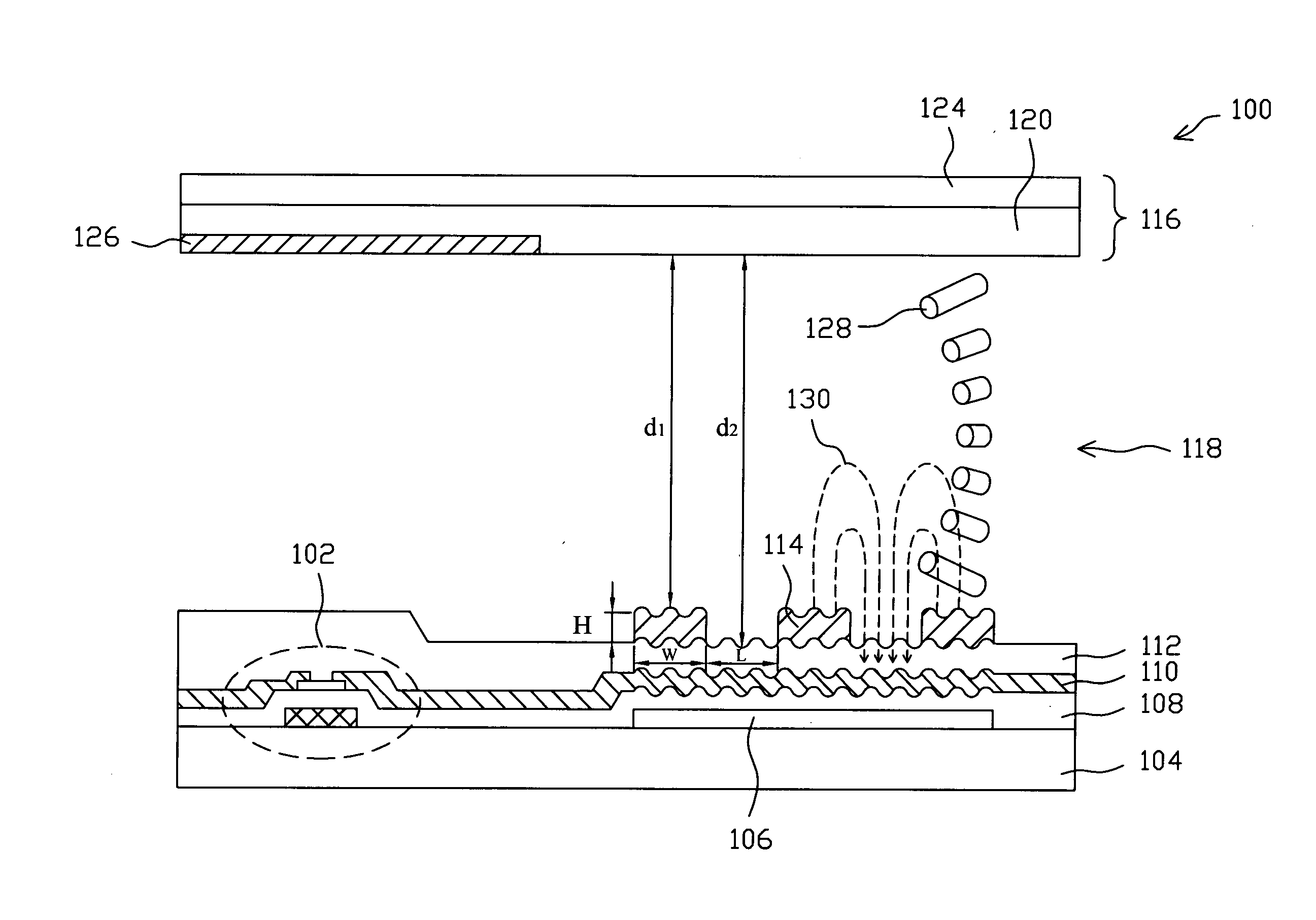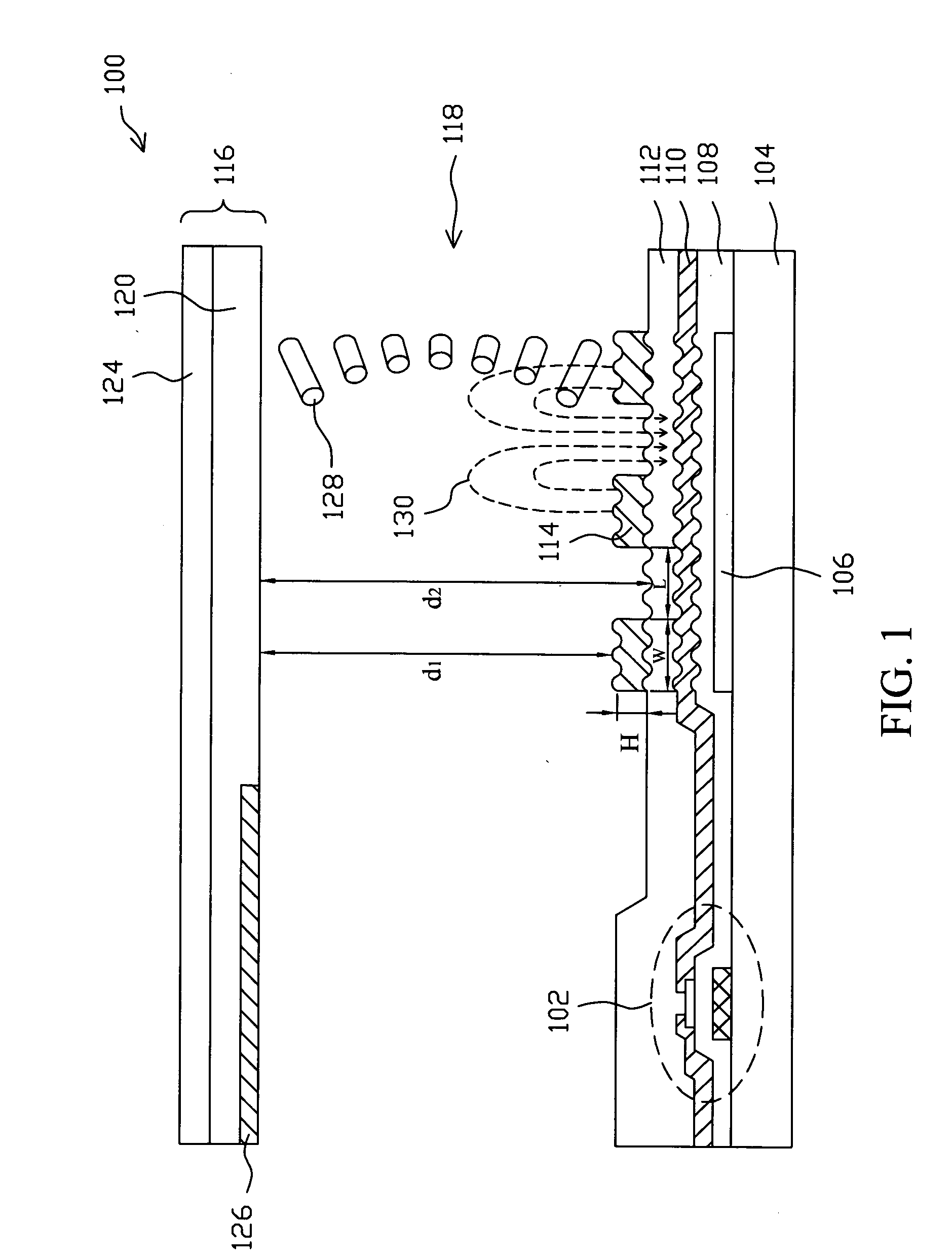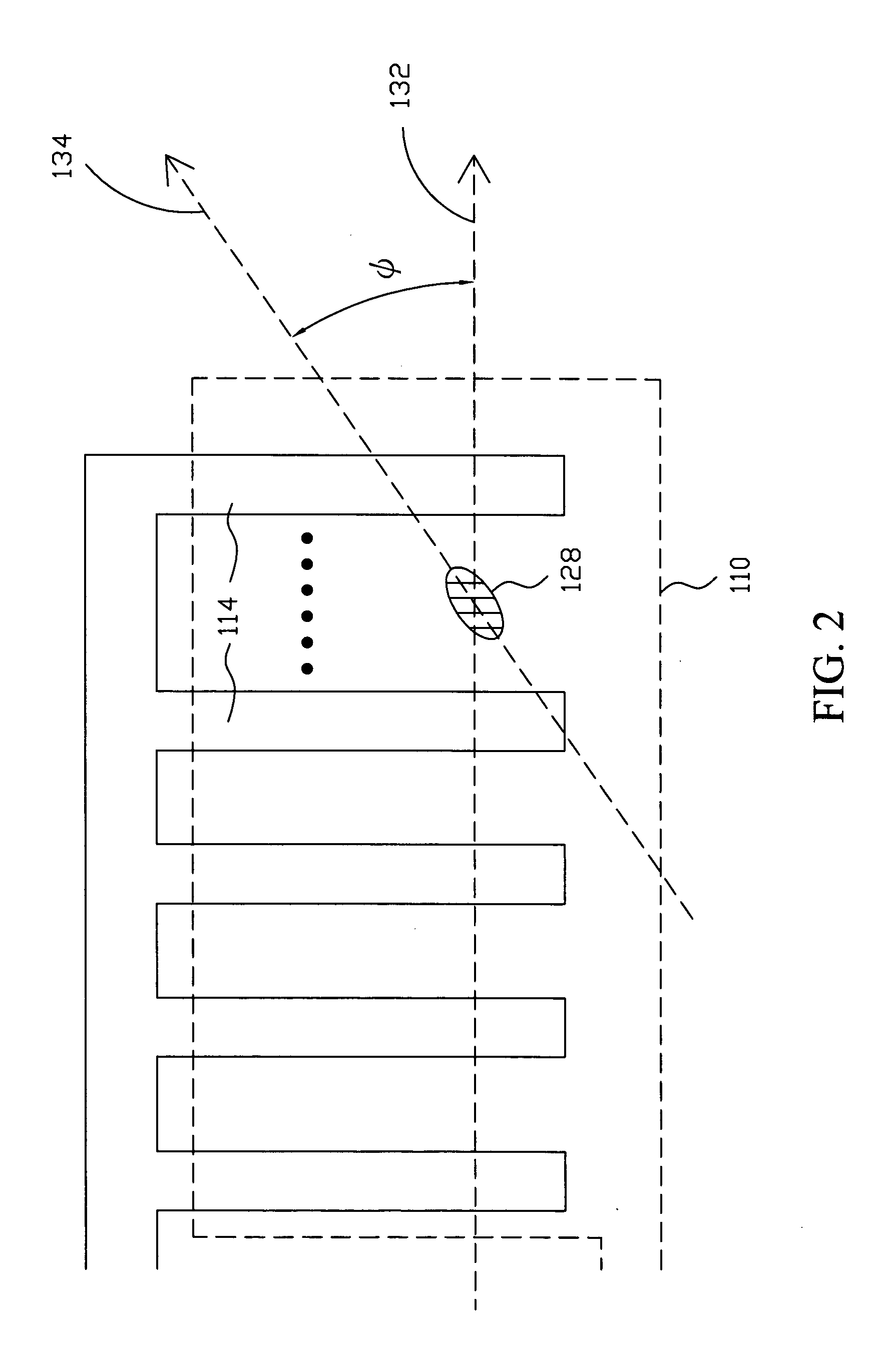Pixel for a fringe field switching reflective and transflective liquid crystal display
a liquid crystal display and fringe field technology, applied in optics, instruments, transistors, etc., can solve the problems of increasing manufacturing costs, too large optical-path differences, limited viewing angle of display, etc., to reduce mask steps to manufacture, improve the efficiency of reflecting light, and reduce manufacturing costs
- Summary
- Abstract
- Description
- Claims
- Application Information
AI Technical Summary
Benefits of technology
Problems solved by technology
Method used
Image
Examples
first embodiment
[0021]FIG. 4 shows a schematic diagram of the cross-sectional view of first embodiment pixel 200 for a transflective LCD according to the present invention, which is similar to the pixel 100 shown in FIG. 1, and comprises a thin-film transistor 102 on a substrate 104, a transparent conductive layer 106 with an insulator layer 108 and a passivation layer 112 thereon, a reflective layer including several metal stripes 114, and a layer 118 of liquid crystal molecules 128 with a horizontal rubbing direction sandwiched between the reflective layer 114 and an optical stack 116 including a color filter 120 and a polarizer 124. However, the pixel 200 employs a transparent conductive layer 202 to replace the metal layer 110 of the pixel 100 shown in FIG. 1. Likewise, when the insulator layer 108 is formed on the transparent conductive layer 106, due to the property of the material to form the insulator layer 108, its top surface will become of a nano-scale roughness simultaneously, and by wh...
second embodiment
[0024]FIG. 5 shows a schematic diagram of the cross-sectional view of second embodiment pixel 210 for a transflective LCD according to the present invention, which comprises a thin-film transistor 102 on a substrate 104, an ultra-micro scattering layer including a transparent conductive layer 106 and an insulator layer 108, a passivation layer 112, a reflective layer including several metal stripes 114, a layer 118 of liquid crystal molecules 128 with a horizontal rubbing direction sandwiched between the reflective layer 114 and an optical stack 116 including a color filter 120 and a polarizer 124, and a black matrix 126 at the front end of the color filter 120 to shield the thin-film transistor 102. In the pixel 210, the thin-film transistor 102 and the ultra-micro scattering layer are arranged on the substrate 104, and the reflective layer 114 is formed on the ultra-micro scattering layer and is formed of the same metal layer to implement the source / drain of the thin-film transist...
third embodiment
[0025]FIG. 6 shows a schematic diagram of the cross-sectional view of third embodiment pixel 300 for a transflective LCD according to the present invention, which comprises a thin-film transistor 302 on a substrate 304, an insulator layer 306 on the substrate 304, an ultra-micro scattering layer including a transparent conductive layer 308 and an insulator layer 310 with the transparent conductive layer 308 sandwiched between the two insulator layers 306 and 310 and formed of the same metal layer to manufacture the drain 3022 of the thin-film transistor 302, a reflective layer 312 including several high reflective metal stripes on the insulator layer 310, an optical stack 314, and a layer 316 of liquid crystal molecules 128 arranged between the optical stack 314 and the reflective layer 312. The optical stack 314 includes a color filter 318 and a polarizer 322, and a black matrix 324 is disposed at the front end of the color filter 318. The insulator layer 310 is made of for example...
PUM
 Login to View More
Login to View More Abstract
Description
Claims
Application Information
 Login to View More
Login to View More - R&D
- Intellectual Property
- Life Sciences
- Materials
- Tech Scout
- Unparalleled Data Quality
- Higher Quality Content
- 60% Fewer Hallucinations
Browse by: Latest US Patents, China's latest patents, Technical Efficacy Thesaurus, Application Domain, Technology Topic, Popular Technical Reports.
© 2025 PatSnap. All rights reserved.Legal|Privacy policy|Modern Slavery Act Transparency Statement|Sitemap|About US| Contact US: help@patsnap.com



